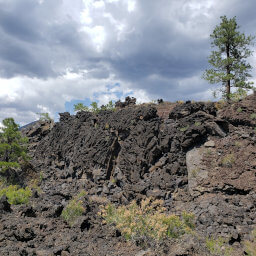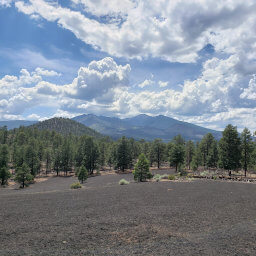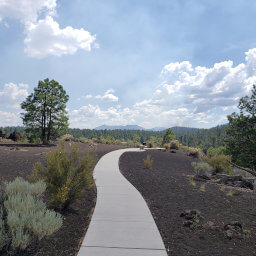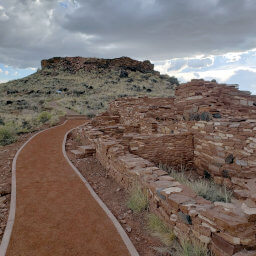| Rating |
★★★★★(5/5) |
| Overall Difficulty |
Very hard |
| Navigation Difficulty |
Easy |
| Distance |
10 miles roundtrip |
| Time |
8 hours |
| Terrain |
Strenuous climbing, 3300 feet of elevation gain |
| Best Seasons |
Spring, Summer, Fall |
| Dog Friendly |
Yes |
| Accessible |
No |
Highlights
- Panoramic views from the highest peak in Arizona
- Stunningly beautiful forest and alpine tundra
- Observing the change in vegetation as you ascend
Hike Summary
My 12th state highpoint and also the highest mountain I've ever climbed at 12,633 feet, is a gem in northern Arizona. Towering 6,000 feet above Flagstaff and the surrounding Coconino National Forest, Humphreys Peak is part of the remnants of an extinct volcano that now comprises the San Francisco Peaks. With their monumental size and visibility over a long distance, the San Francisco Peaks are sacred to the Navajo, Hopi, and peoples from 11 other local tribes, some of whom believe the mountains as the home of their ancestors. Although the climb is difficult, it is one of the easier western state highpoints to summit, and the scenic rewards are stupendous.
An early start is recommended because afternoon thunderstorms are frequent, especially in the summer. Bring enough water and food and don't forget to bring an extra layer or two -- it can be as much as 20 degrees cooler on top than it is in Flagstaff, and high winds are common. The trail throughout is exceptionally rocky and covered with mangled tree roots, so wearing good footwear is crucial. Know the signs of altitude sickness, and don't be afraid or ashamed of turning around if you do fall ill.
The trail, the "easiest" of all routes to the top, is well-marked and heavily traveled, making navigation simple. The hike begins by crossing a ski slope, which transforms into an absolutely beautiful meadow in the summer, as pictured below. Once in the forest, it's a long series of switchbacks up the mountain until you reach the saddle. With a trailhead elevation of 9,200 feet (almost as high as the tallest mountain near Tucson), the air is already thin, and you'll notice the effects of altitude immediately after you start uphill. Since this trail is on the west side of the mountain, it is entirely in the shadows during the morning, and the trees block most sunlight the rest of the day.
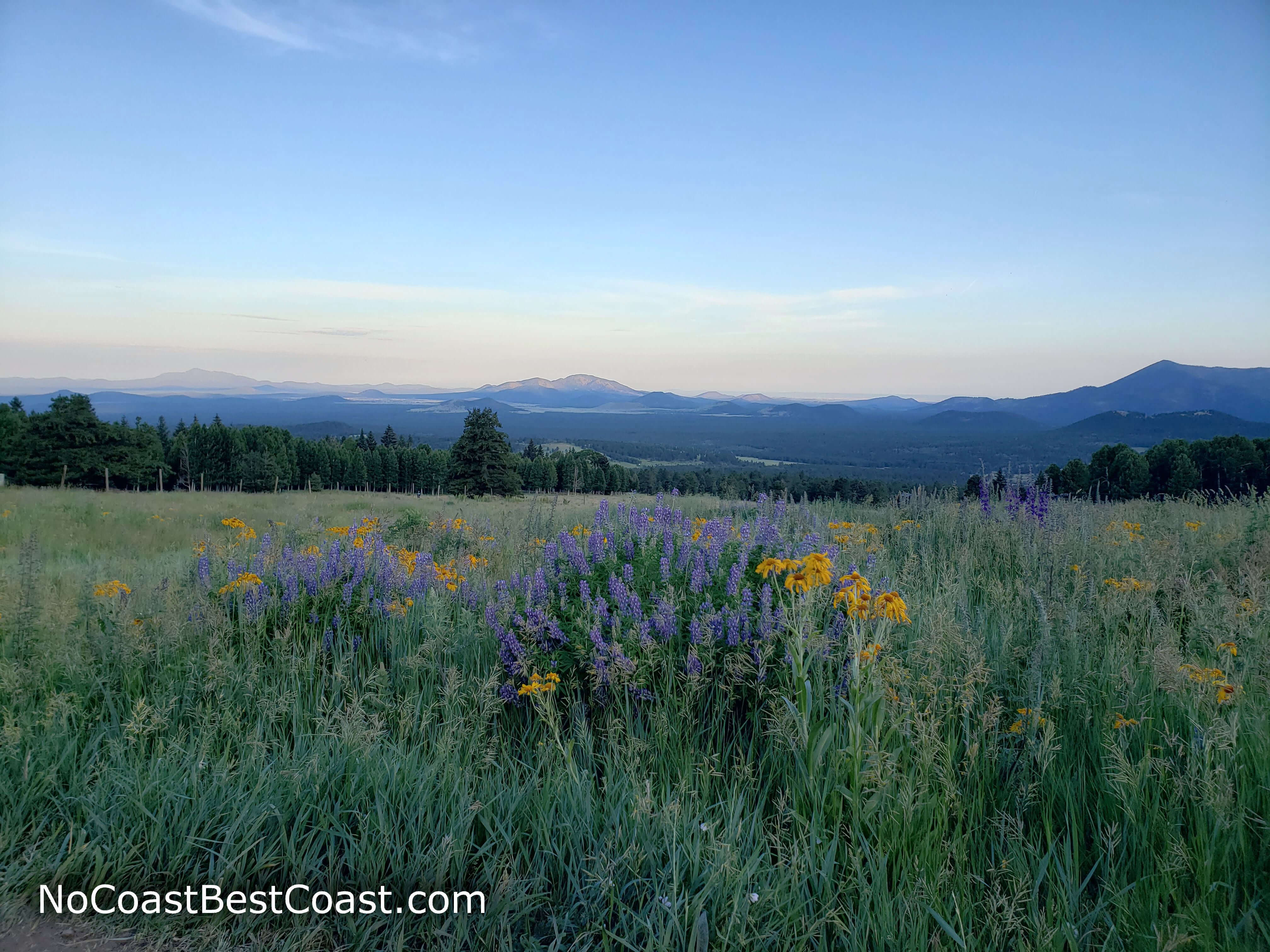
The flowery meadow at the start of the hike
One of the biggest joys of this hike is observing the landscape transition as you progress uphill. The forest at the start of the trail is a lovely mix of ponderosa pine and quaking aspen, which turn bright yellow in the fall. As you ascend, the ponderosa pines are replaced by spruce and fir trees, as evidenced in the picture below. Small meadows punctuate the dense forest canopy, and you won't have much of a view until you reach higher elevations.
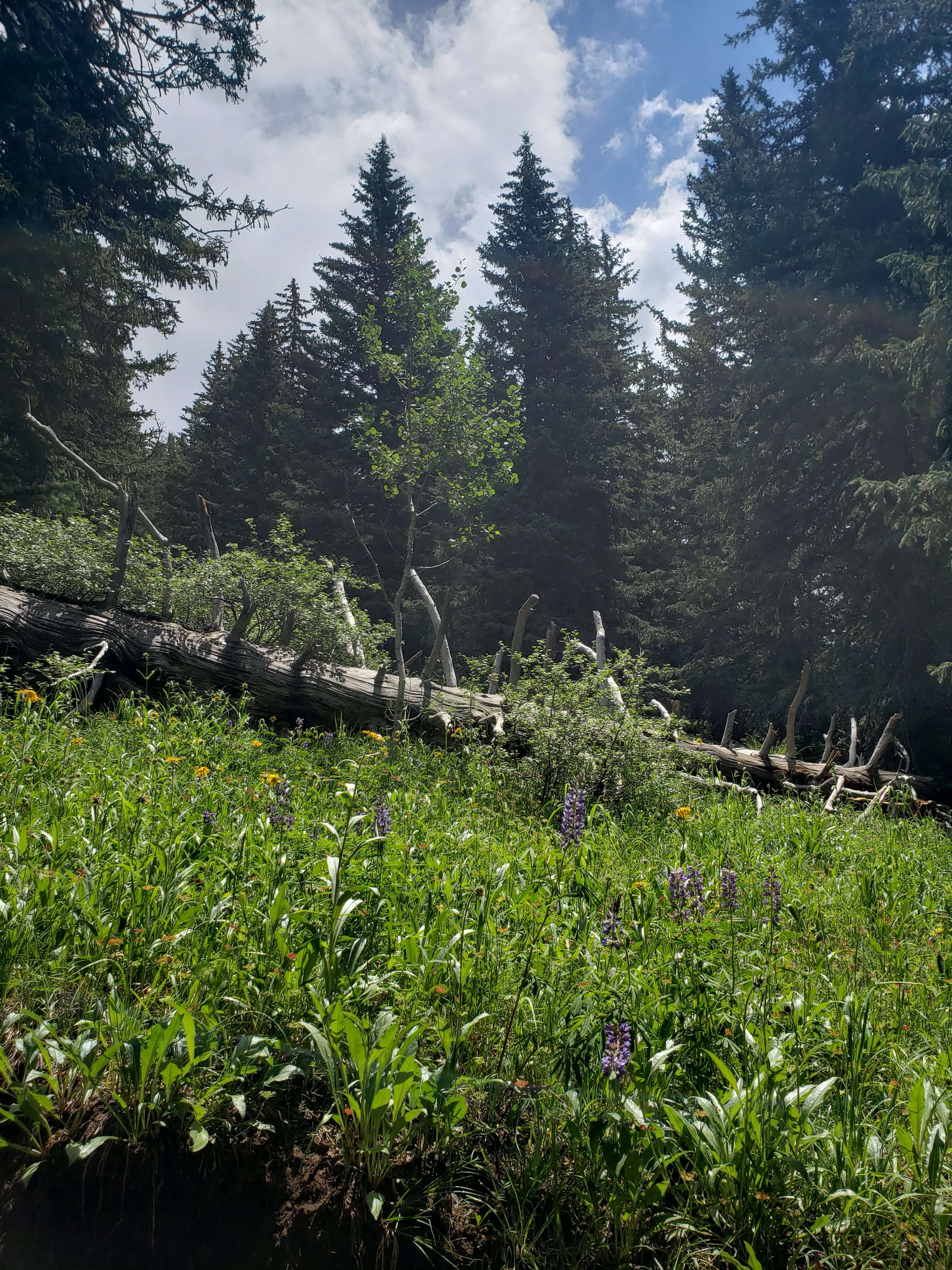
Just one of the small, wildflower-filled meadows along the trail
Once you reach around 11,000 feet of elevation, the forest begins to thin, opening dramatic views such as that of Agassiz Peak pictured below. Few species of tree can survive at this elevation, and nearly all of the trees you pass will be the hardy Rocky Mountain bristlecone pine, a relative of the oldest living trees on Earth. As you climb higher, these trees become shorter and more gnarled, evidence of the harsh weather conditions at this height.
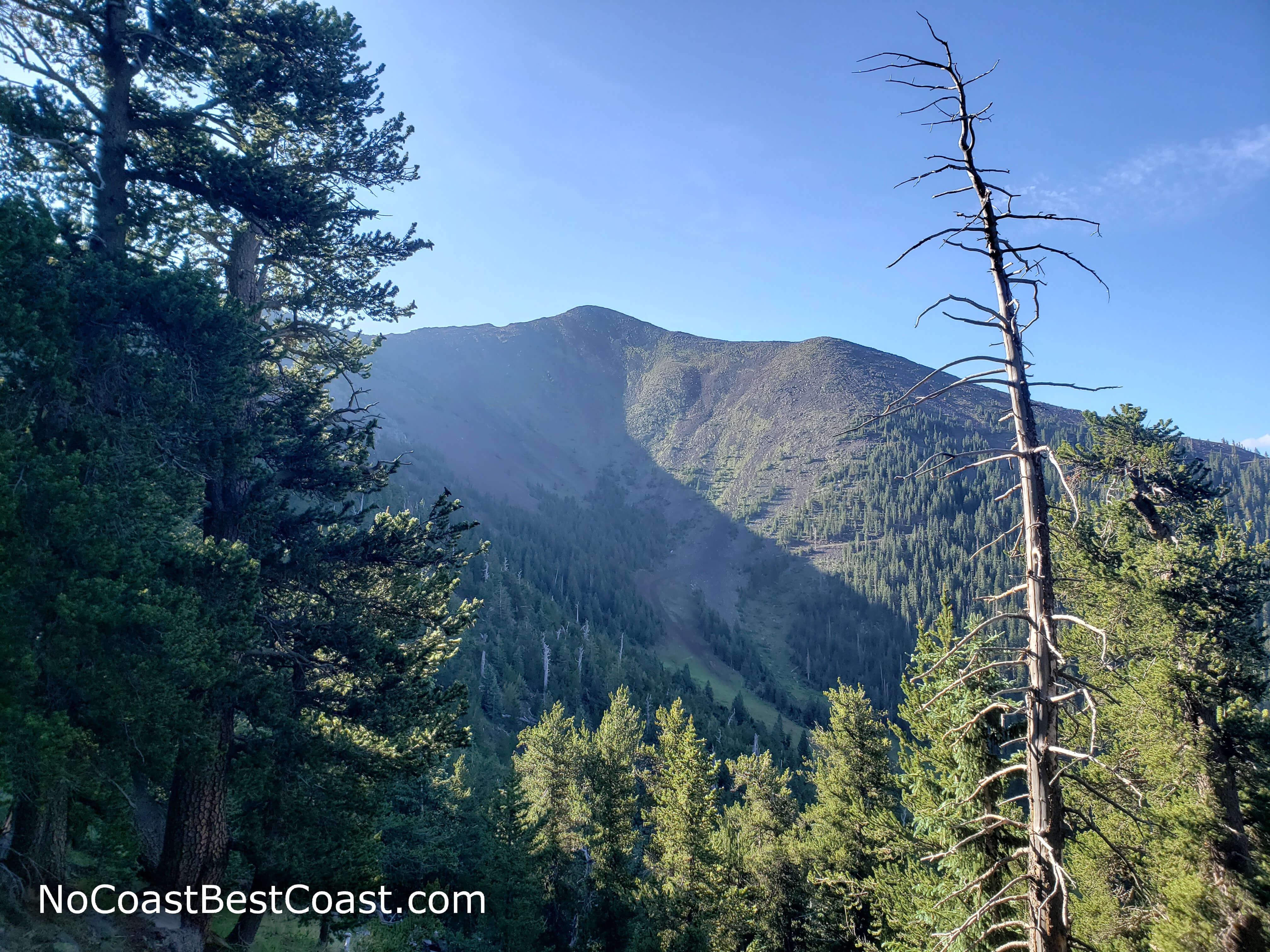
Agassiz Peak as you approach treeline
Past the "no camping" sign at 11,400 feet, the trail becomes steeper, marking a difficult push to the saddle between Humphreys and Agassiz. The views at the saddle reward your effort, and you will be able to see the other side of the mountain for the first time and possibly some patches of snow (I'm still shocked there was snow in Arizona at the end of July), as pictured below. In the distance, you can see O'Leary Peak and
Sunset Crater. Take a break (trust me, you won't need this reminder) to eat and drink, and don't forget to reapply sunscreen to prepare yourself for the treeless, high-elevation trail beyond.
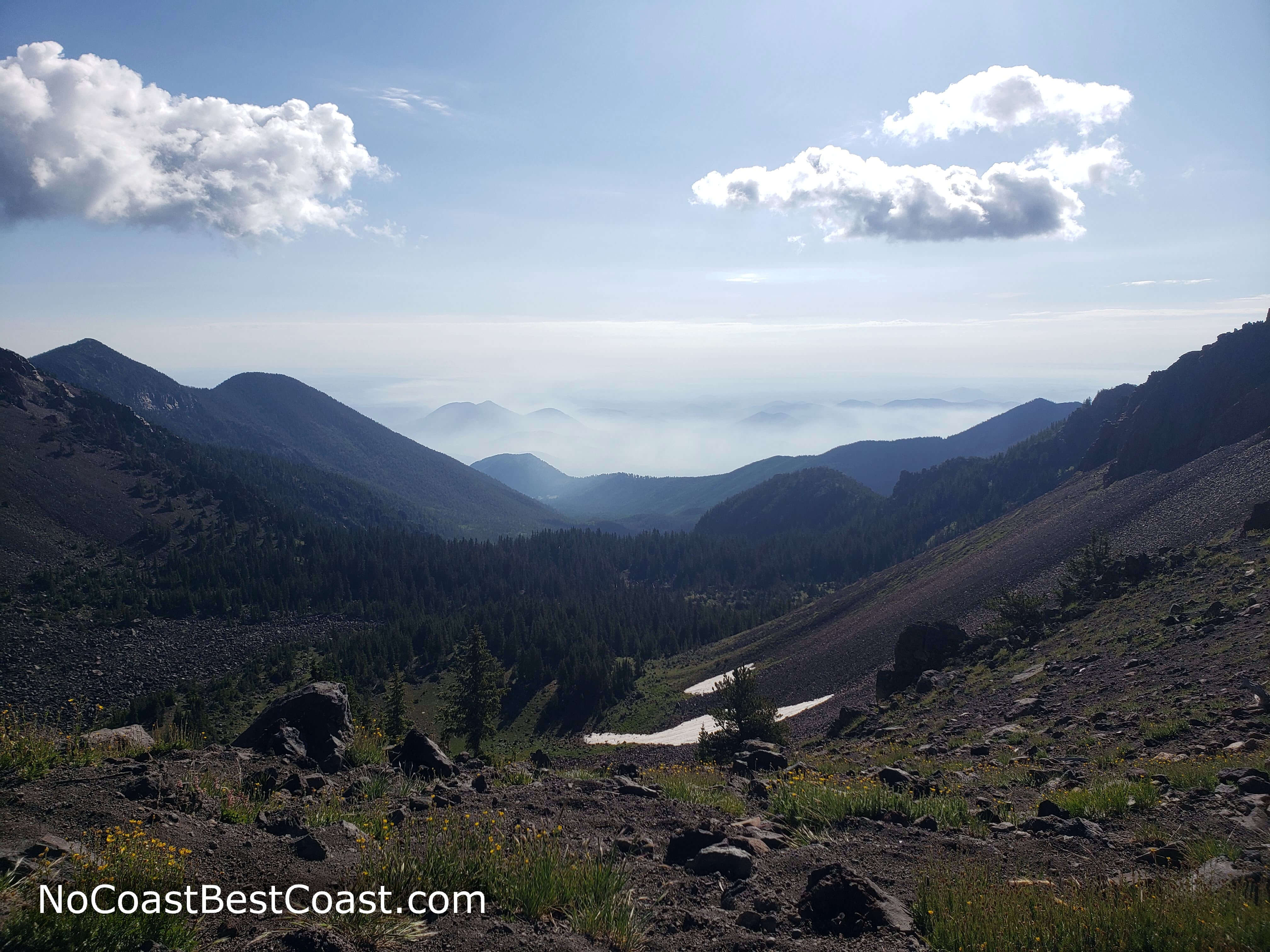
The view from the saddle looking east, snow still visible in July
Above the saddle, you will enter the alpine tundra, an environment of piles of rocks with tiny flowering plants somehow sprouting between the cracks. Wooden poles made from pine branches will indicate the path, helping you navigate the rocks and protecting the fragile ecosystem from footsteps.
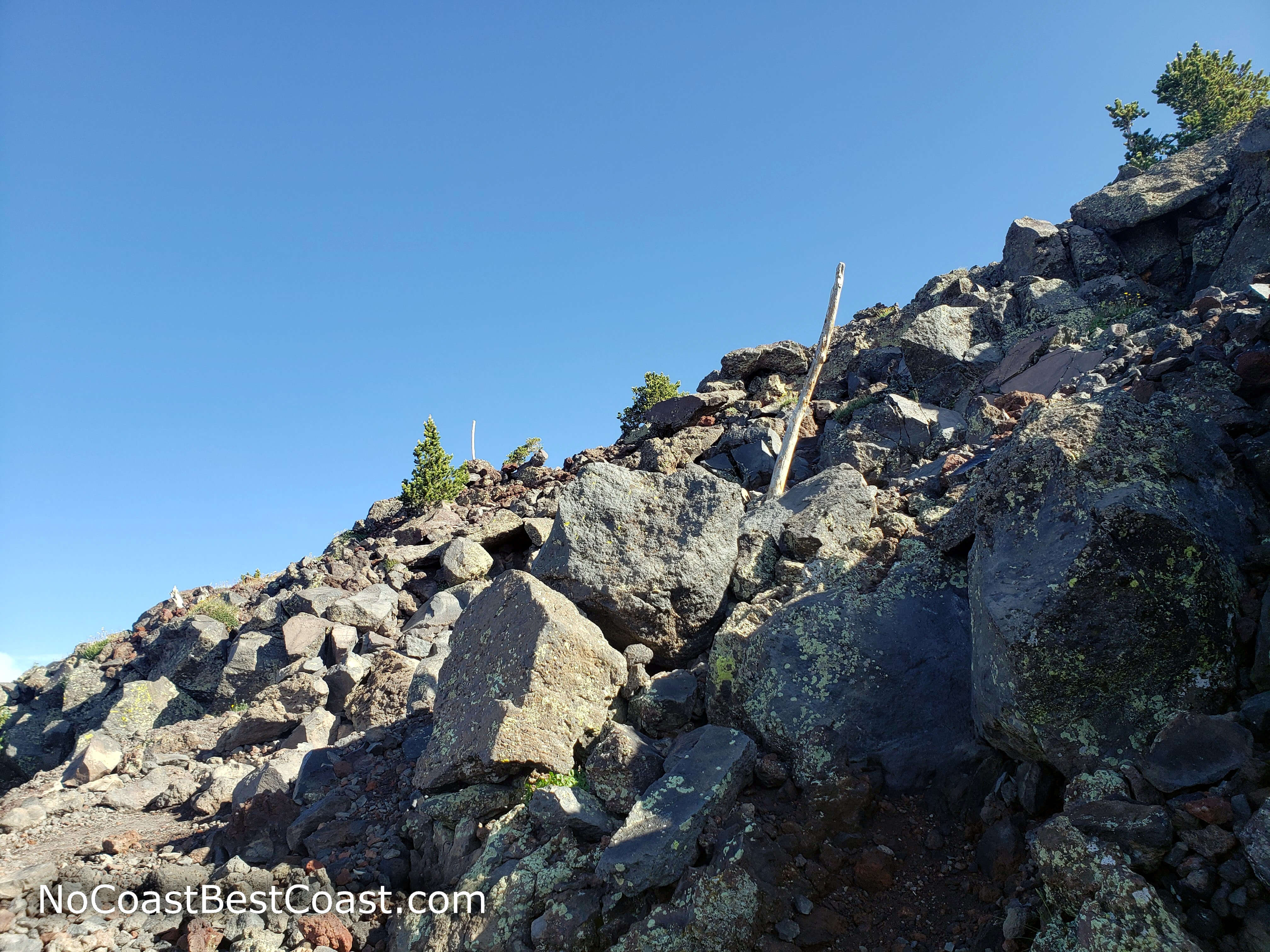
Wooden poles marking the trail through the rocky environment above treeline
It is absolutely imperative that you stay on trail to prevent the destruction of rare plants; several signs along the way inform you there is a $500 fine for leaving the trail. In particular, the San Francisco groundsel pictured below is found nowhere else in the world except for the alpine tundra on Humphreys and Agassiz Peaks -- it's a federally listed threatened species mainly due to the impacts of recreation. Tread lightly!
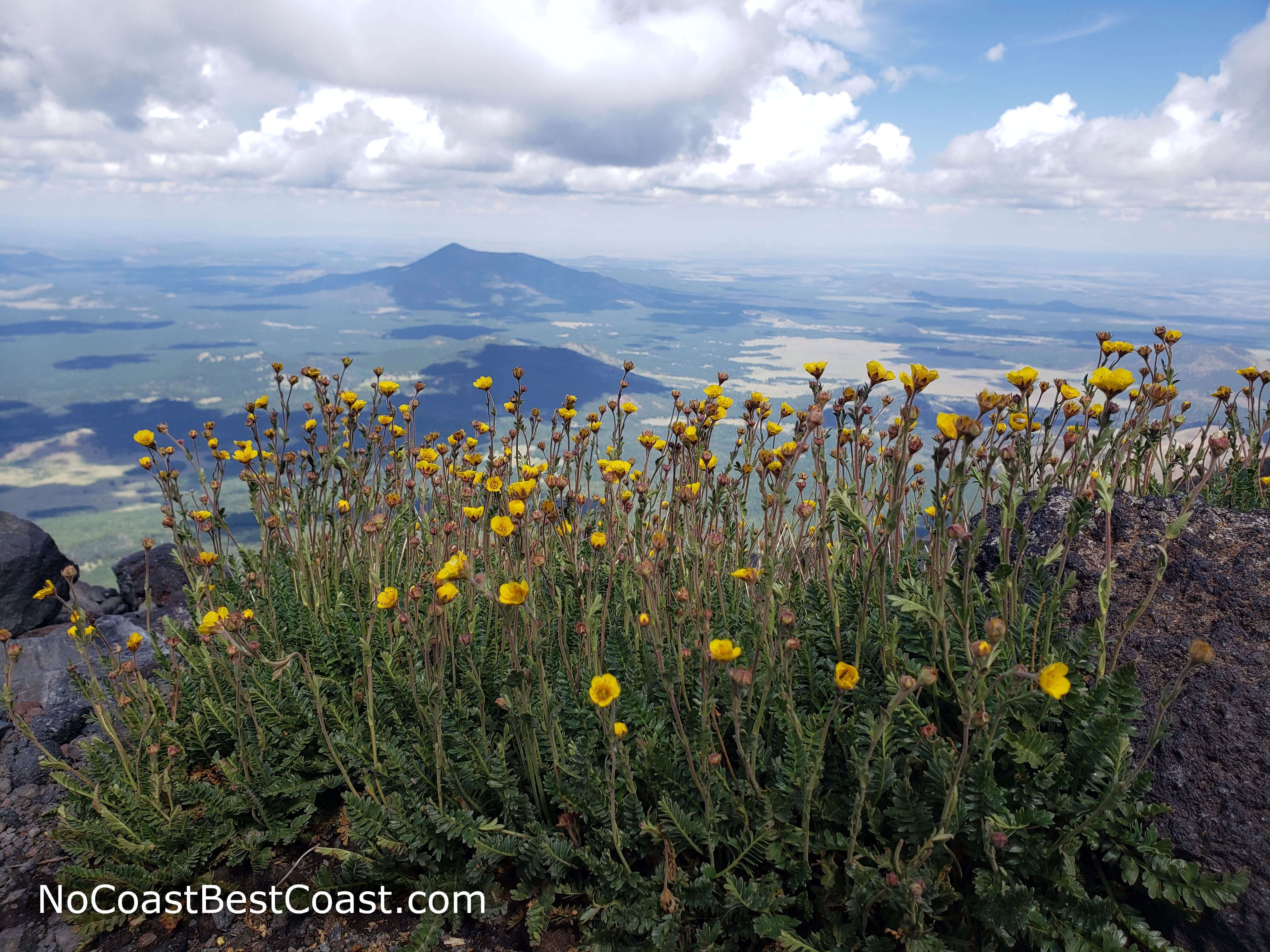
The pretty yellow flowers of the San Francisco groundsel only grow on these mountains
If you thought the trail thus far was hard, you're in for a rude awakening. The final mile to the summit is brutal. Not only is the trail rocky and steep, there are a series of false summits (at least 3) like pictured below that will tease and disappoint you. In reality, the true summit is out of view for a majority of the final push. Combine this with the fact that you're above 12,000 feet of elevation and can hardly breathe, you'll certainly feel relieved once you reach the top.
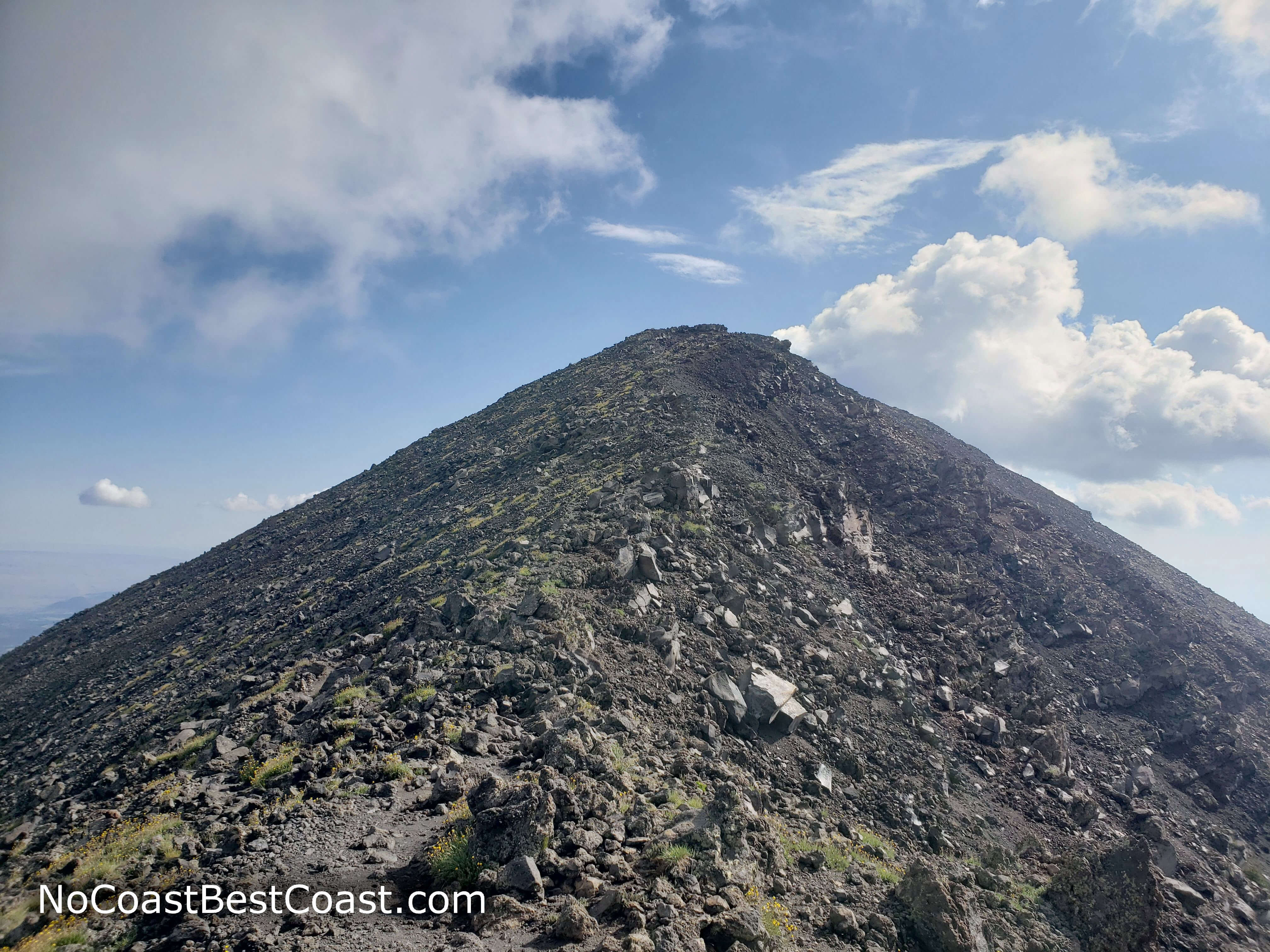
One of several false summits that will crush your spirit
One technique that helped me through the extreme difficulty was setting small goals. I'd pick the furthest trail marker pole I could see and tell myself I could take a break once I reach it. Or I'd rest when I reached the top of a false summit. Because there is absolutely nothing but rock and tiny flowering plants in this alpine tundra, the views are stupendous no matter where you stop. The false summits arguably have a better view of the mountains to the south than the true summit -- see the picture below as evidence.
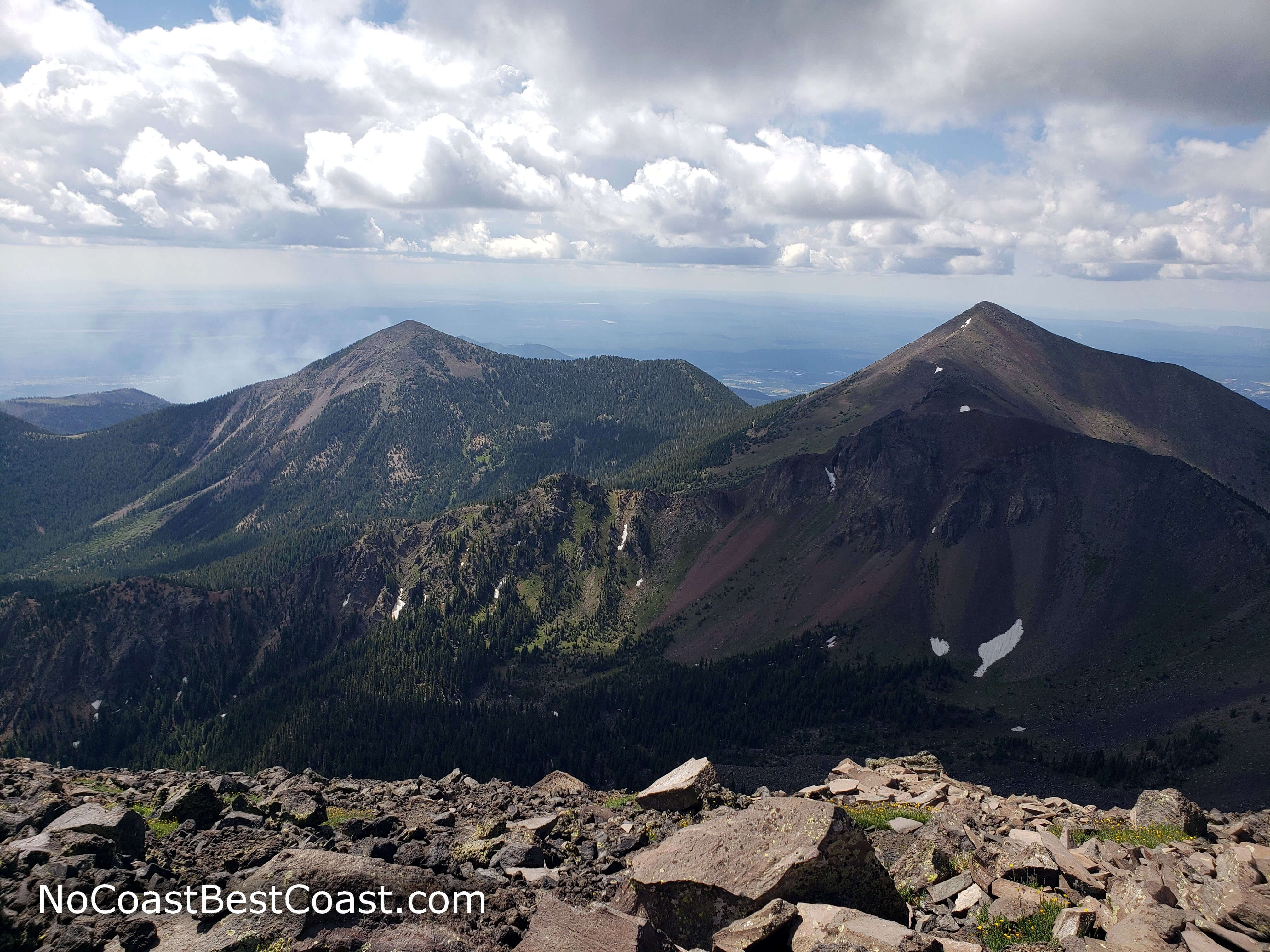
Looking south towards Agassiz and Fremont Peaks from the top of one false summit
You'll know you're approaching the final summit because you'll be able to see the post pictured below and, most likely, people with their packs off. Of course, this last bit is possibly the steepest part of the trail; one fellow hiker even called it a "scramble" (truthfully though, either he missed the trail or was so tired he had no choice but to use his hands). Once at the summit, the sign pictured below will greet your triumphant achievement. Typically, it is extremely windy, which is why there is a protective rock wall on the western side of the sign (I was expecting conditions like I had at
Guadalupe Peak, but was lucky).
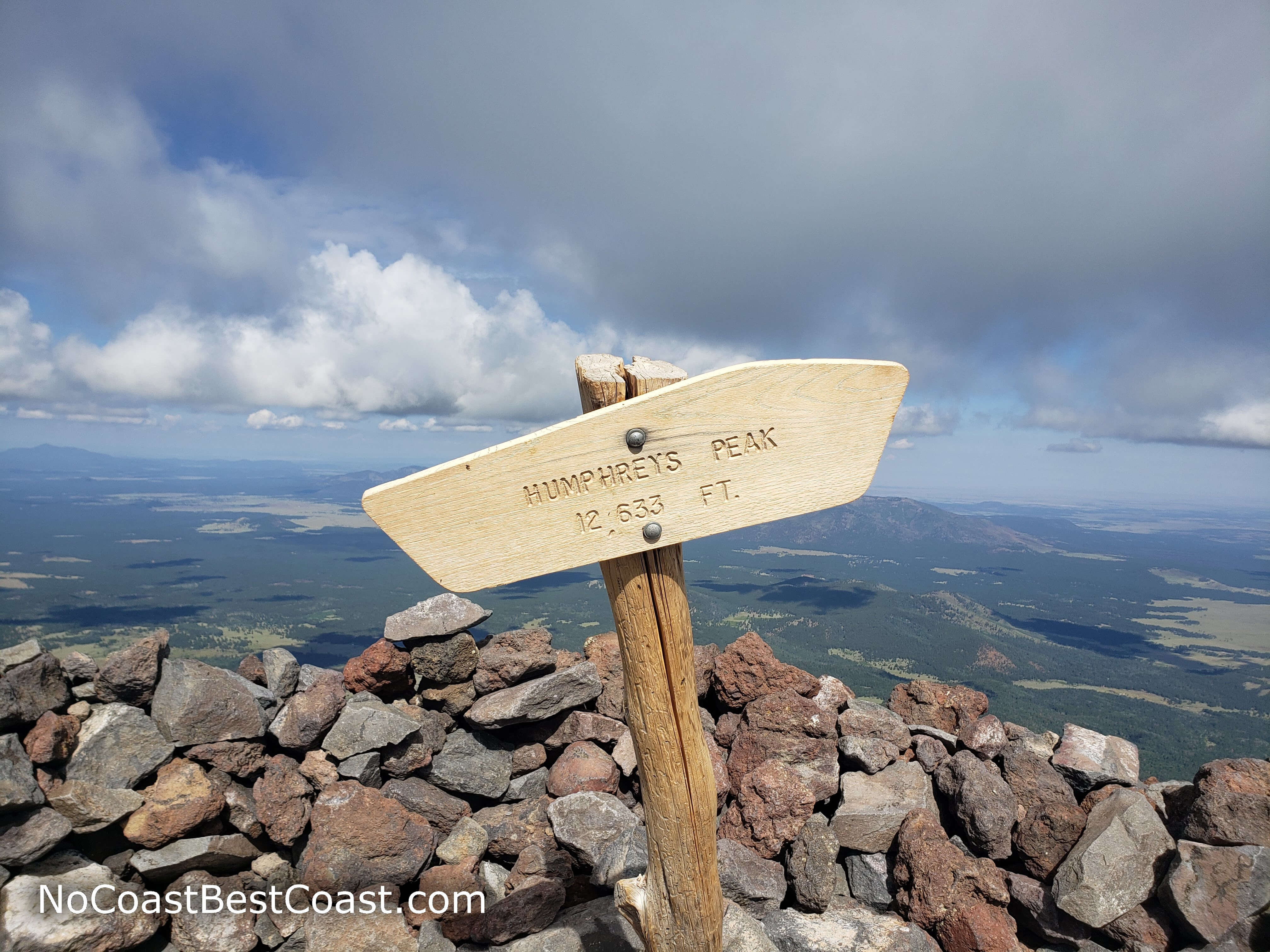
The post marking the summit and the rock wall wind barrier
As the highest point in Arizona and the
49th most isolated peak in North America (nothing is taller for 246 miles), the panoramic view is phenomenal. To the south, you can see the Mogollon Rim beyond the neighboring peaks. To the north, as pictured below, you can see all the way to the Grand Canyon (it was hazy due to the Museum Fire for me though) with the Painted Desert to the northeast. To the east, you can see the lava flows at
Sunset Crater Volcano National Monument.
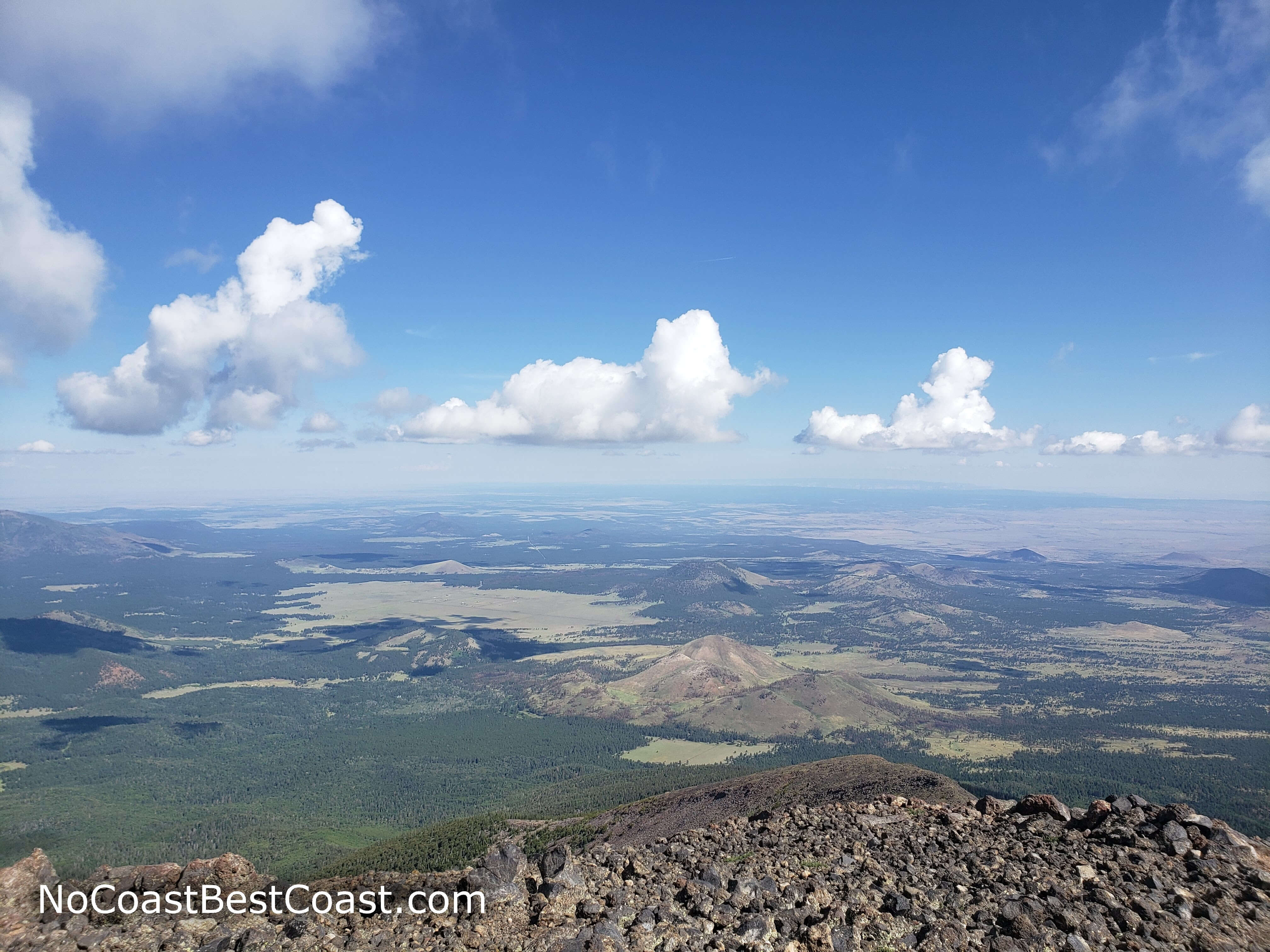
The view north extends to the Grand Canyon on a clear day
Hopefully you arrive at the top with enough time to descend below treeline before afternoon storms arrive. I was just below the saddle at 11am when I heard the first sound of thunder and the approaching storm was visible on the horizon. If you do sense an impending storm and have not reached the peak, turn around immediately; the only thing worse than failing to summit is being struck by lightning on a highly exposed mountaintop!
This hike is fantastically memorable, and I can already see it making my top list for 2019. Don't miss this hike! Connect with me using the social media links below and share your adventures!
-
Home ›
-
Hikes ›
-
Arizona ›
-
Coconino National Forest ›
-
Humphreys Peak (Arizona State Highpoint) via the Humphreys Peak Trail
Hiked on Friday, July 26th, 2019 by Ricky Holzer
Important Information
Dogs are allowed on leash -- this is especially important as you ascend above treeline to protect the fragile tundra plants. Don't even think about bringing kids on this hike; instead, take them to nearby Sunset Crater Volcano National Monument to enjoy the shorter trails with excellent views of the San Francisco Peaks.
Hiking to the peak is possible in all seasons; however, late spring and fall are the best times to climb. Summer is also an option (I myself did this), but be aware that afternoon thunderstorms are almost a guarantee -- plan to be off the mountain by noon. Winter hiking requires a free permit; head to the Flagstaff Forest Service headquarters during weekday business hours to obtain a permit. With the exception of winter, this is a highly popular trail and you are bound to see many people especially on weekends. Luckily, the trail is hard enough and long enough that you will still have moments of solitude thanks to everyone's unique climbing speed.
Directions
From Flagstaff, take U.S. Highway 180 north towards the Grand Canyon. Turn right onto Snow Bowl Road, following the signs for the Arizona Snowbowl. Drive up the winding mountain road until you reach the parking areas at the base of the mountain. Turn left into the lot signed for the Humphreys Peak Trail.
Google Maps Directions
Parking, Fees, and Facilities
Parking is free! There are portable toilets in the parking lot.
Nearby Hikes
See all nearby hikes
External Links
